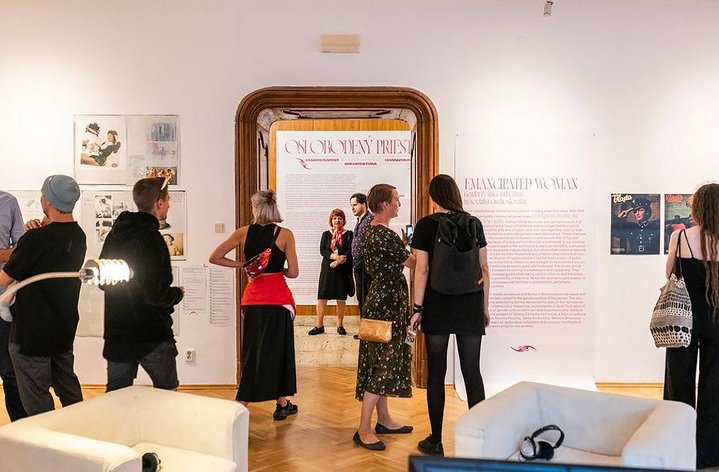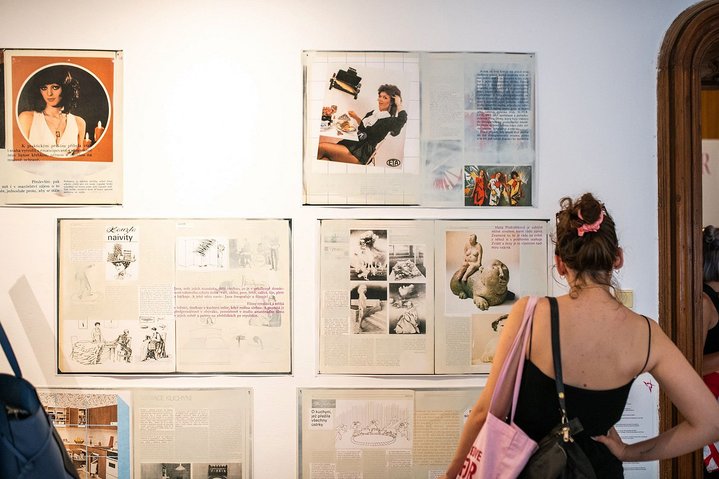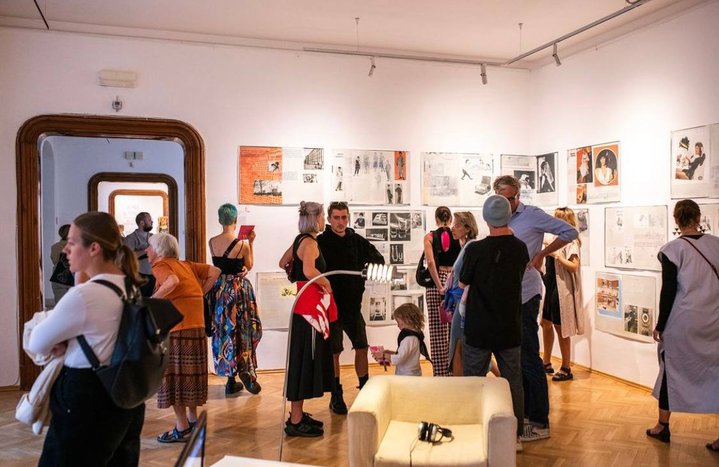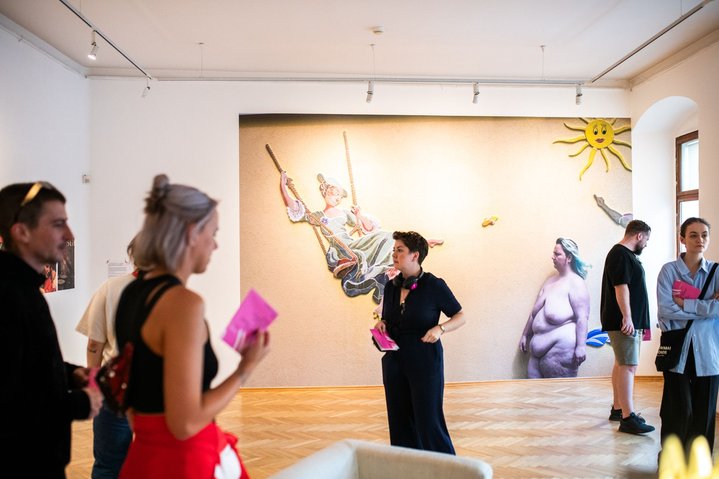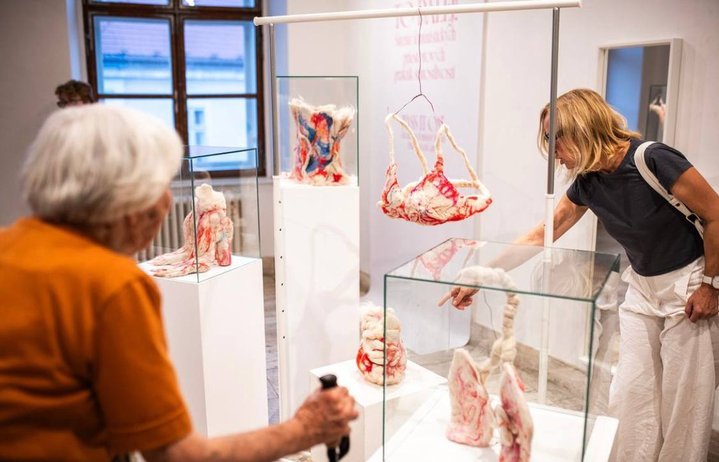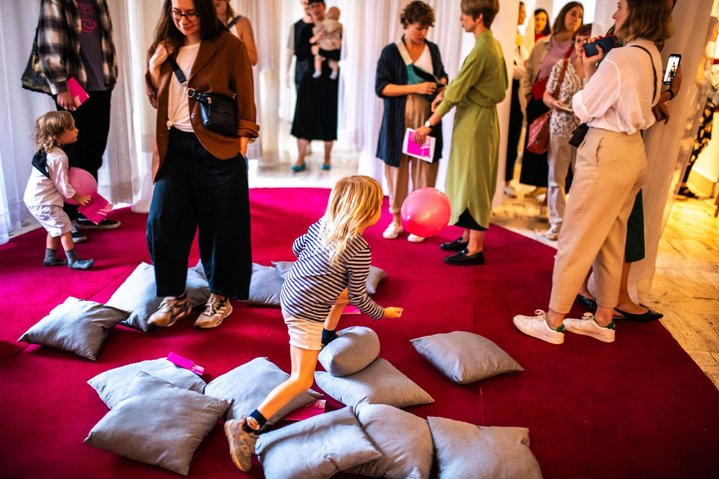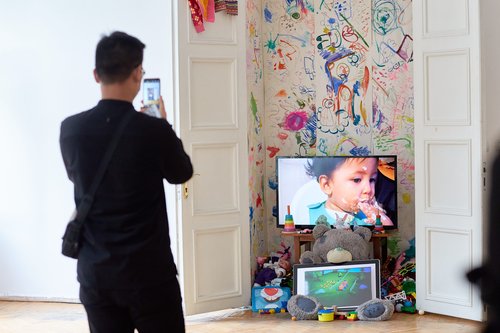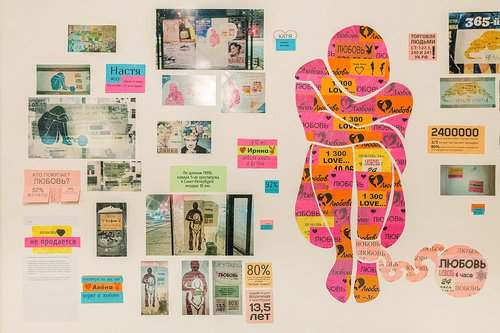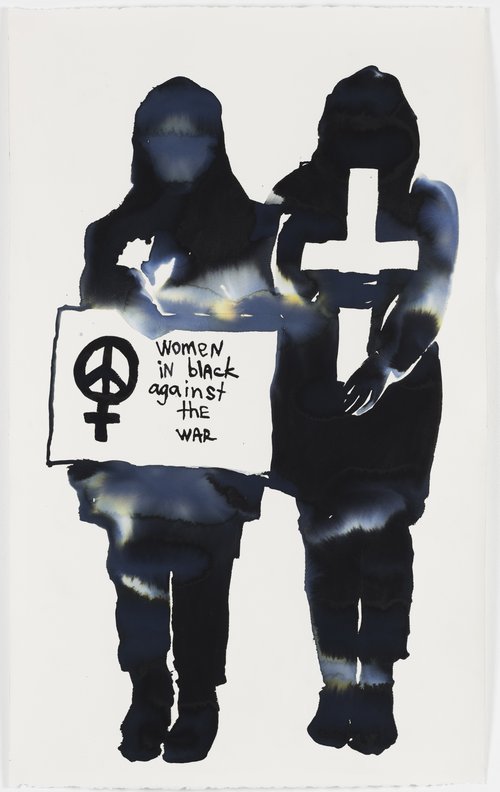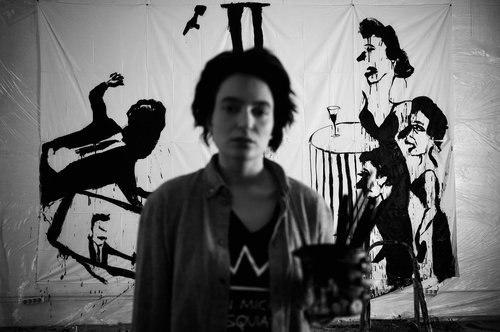Liberated Space: Care – Architecture – Feminism. Exhibition view. Bratislava City Gallery. Bratislava, 2023. Photo by Barbora Girmanová. Courtesy of Bratislava City Gallery
Carving Out a Female Space in Bratislava
An exhibition called Liberated Spaces, now on view at the Bratislava City Gallery, scrutinizes our urban environment through a feminist lens. The scope of issues raised in this show stretches far beyond the city borders of the Slovakian capital.
Offering plenty of opportunity for critical thinking, ´Liberated Spaces´ at the Bratislava City Gallery engages in a feminist enquiry into architecture. It looks through an intersectional lens at the field of architecture as an industry, both its production and consumption, at female architects, architecture for women, places of care and rest, nomadism, labour and orientalism. Echoing Linda Nochlin’s seminal 1971 essay ´Why Have There Been No Great Women Artists?”, the curators ask: “Where have women architects gone? What obstacles do they face in their profession, and what emancipatory strategies can benefit them? Who owns public space, and what is feminist architecture?”
Part historical overview, part educational platform the show mixes contemporary art and archival material. It can be read on many levels, even physically – the space offers opportunities to sit, lie, rest.
A tent-like area with cushions on the floor to rest welcomes visitors in the first room. Here they can listen to interviews from the Czech database Women in Architecture, a preview of a project about to launch publicly. The image of a tent is a leitmotif that weaves its way throughout the show. Themes of rest, care and shelter are key so the tent is an apt umbrella. “It can be seen as an interface between the inside and outside, public and private, temporary shelter and a permanent mobile home. It provides a gathering place, a momentary safer space set up in public to shield oneself, among other things, from view while also being permeable, easy to open up or dismantle. It also serves as an emergency shelter for refugees all over the world and is sometimes euphemistically referred to as ´nomadic architecture´,” writes Petra Hlaváčková, the curator.
This is most directly represented in the work of Emília Rigová (b.1980), whose central piece in the show acts as its focal point, a large textile construction floating in the middle of the room made from the bright patterned fabric of a Romani scarf. ´This is Not a Skirt´ is the work of a Romani artist who is fighting the colonial pigeon-holing of the Roma people, where judgments are often made on external appearances, which in turn gets reinforced.
Nomadism, both traditional and contemporary, as an alternative non-permanent form of architecture is a robust intellectual chapter of its own, and in addition to Rigová, several artists engage with this theme. There is Ziliä Qansurá (b. 1992), originally from the Russian region of Bashqortostan, who is working with the nomadic felting traditions of her ancestors forced to settle by the colonial pressure of Russian Empire. Katarína Csányiová (b.1982) looks at the contemporary ´Nomadism´ of Slovakian women care workers travelling to and from Austria.
The issue of contemporary ´digital nomadism´, is discussed in the exhibition’s accompanying zine catalogue: “this hashtag-lifestyle relies on the distributive injustices of the North-South divide: People from the Global North benefit from a strong passport and privileged access to digital technologies on the back of people and the environment of the Global South,”. This publication, which is available to be downloaded, deserves a special mention, since it broadens critical thinking beyond the exhibition walls.
Other works of art question the city as a space of individual use through critical and humorous videos of performances and interventions, and another section looks at the history of emancipation in Czechoslovakia through archival material from the media.
The show raises important topics and issues that open up a broad field of investigation. Its scope is ambitious and the variety of material offers viewers different levels and angles of immersion into the subject through arresting contemporary art works alternating with documentary materials. On a downside one leaves with a feeling of having only skimmed the surface of something that could have been a much bigger show. Or the sense perhaps that the curators could have delved deeper into any one of the themes raised such as the history of Czechoslovakian female architects; or contemporary nomadism; or female uses of the constructed environment. Nonetheless, what remains some unanswered questions stay with you and connect to a broader movement of decolonising and upending gender stereotypes in the sphere of architecture.
Liberated Space: Care – Architecture – Feminism
Bratislava, Slovakia
21 September 2023 – 25 February 2024






